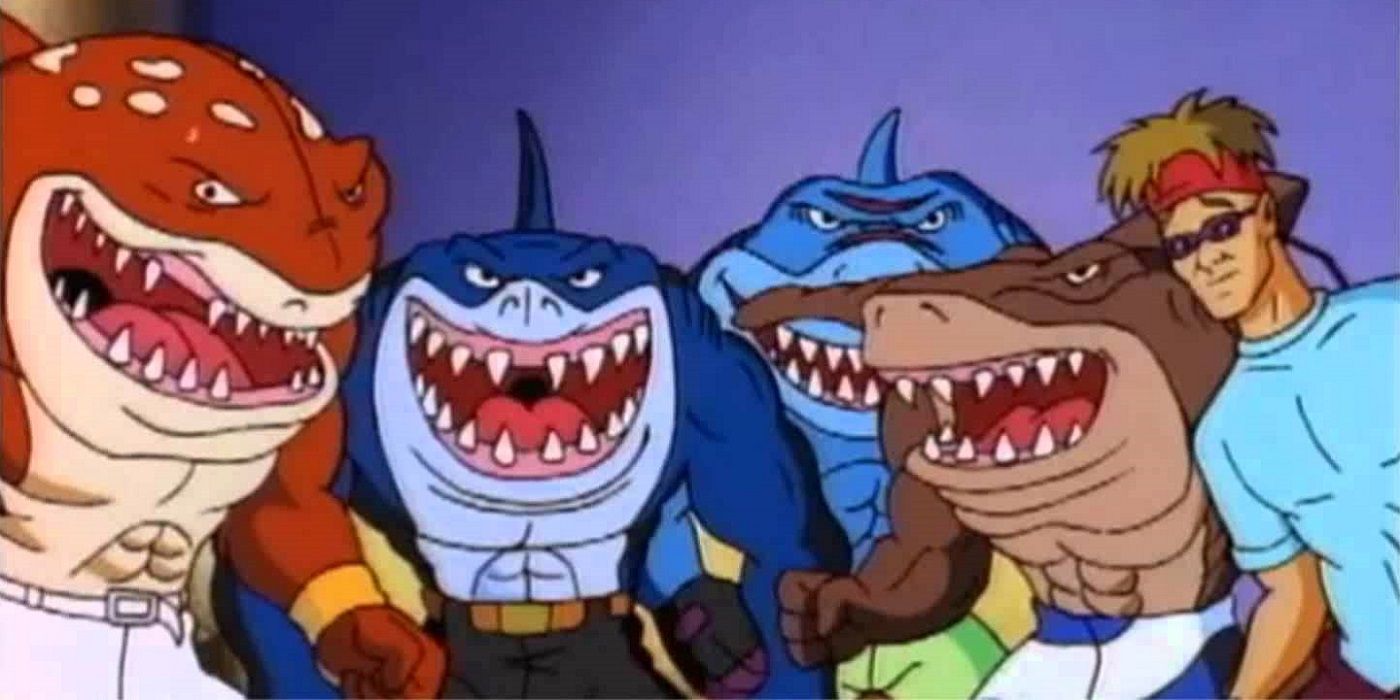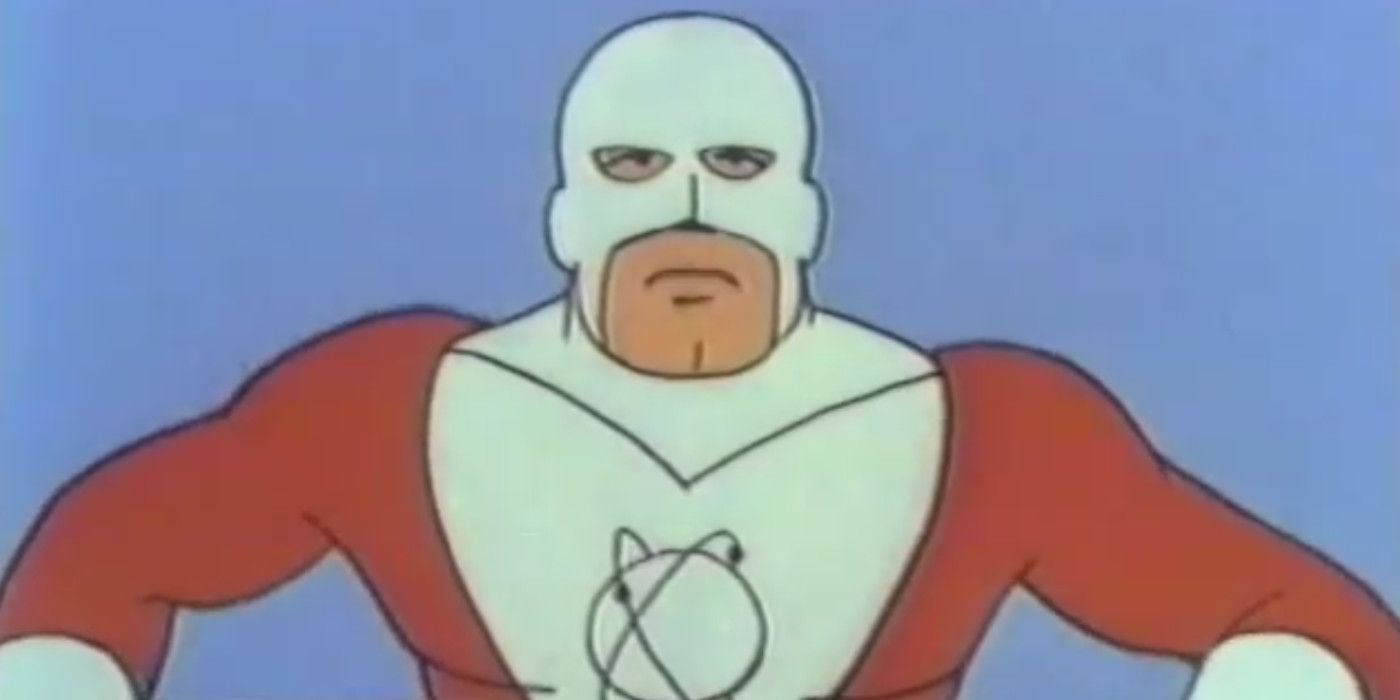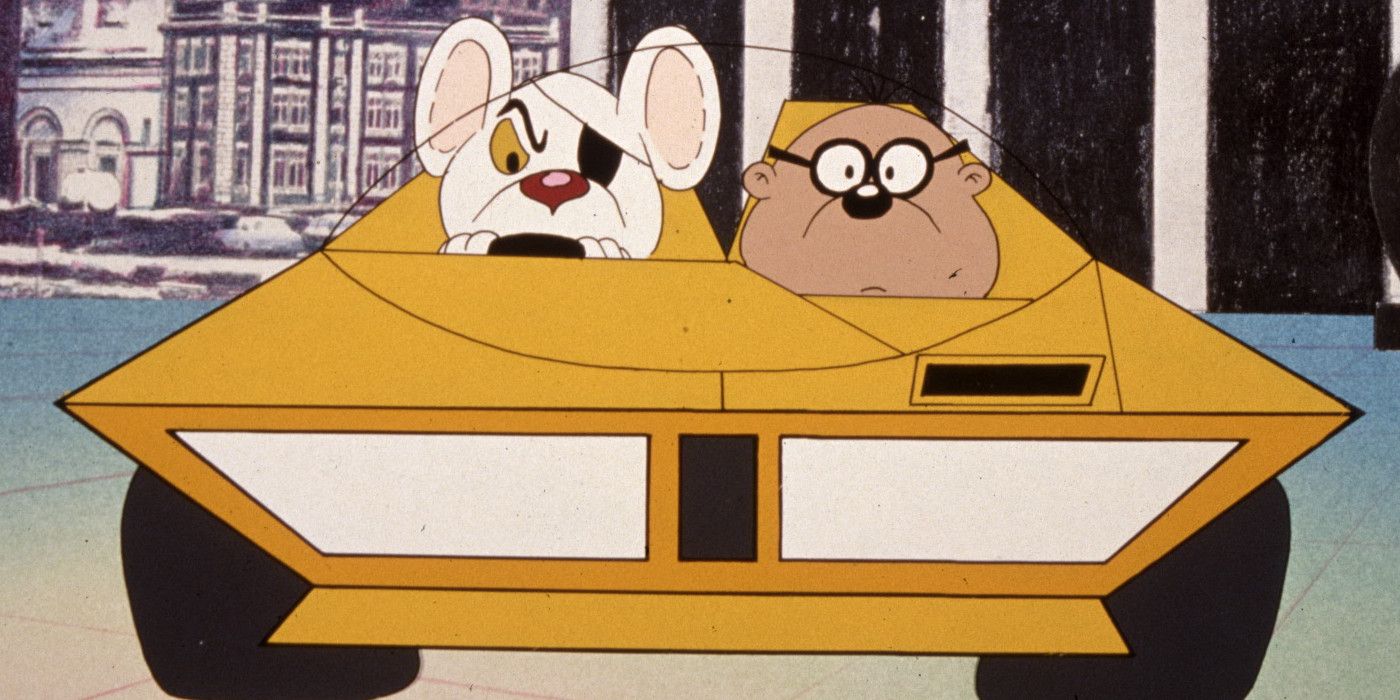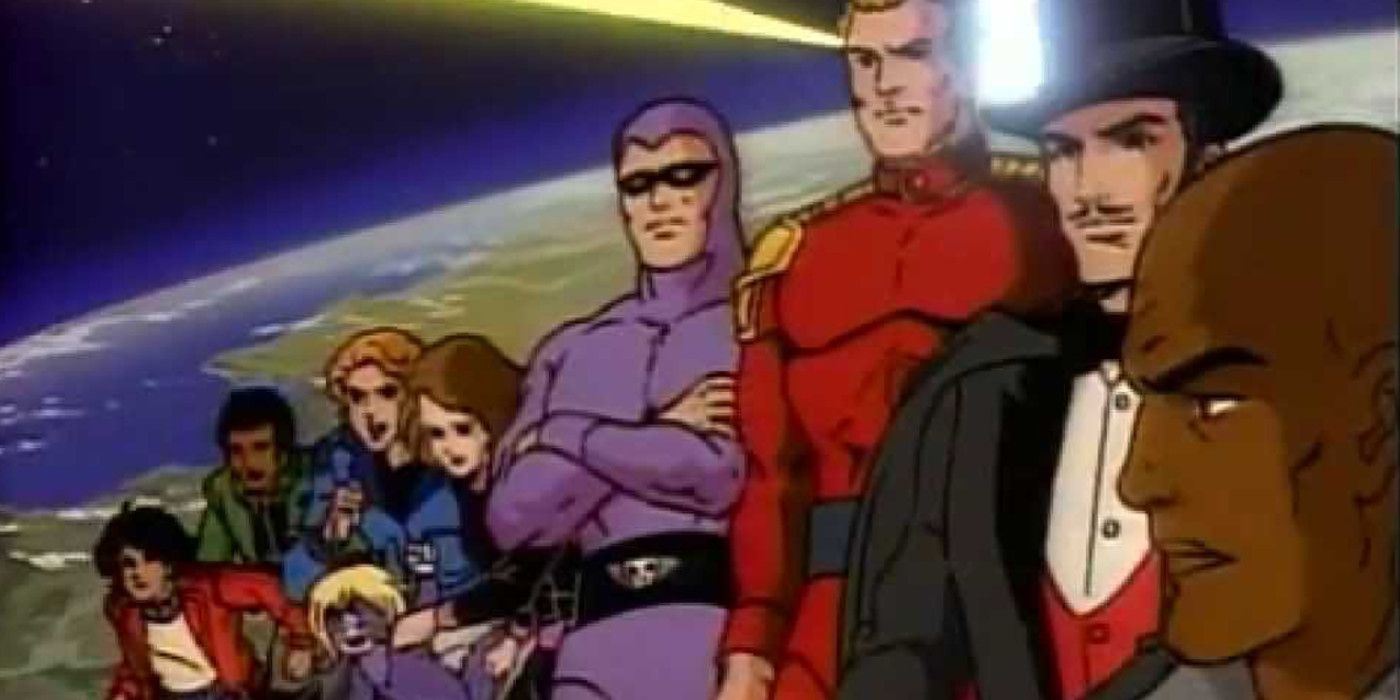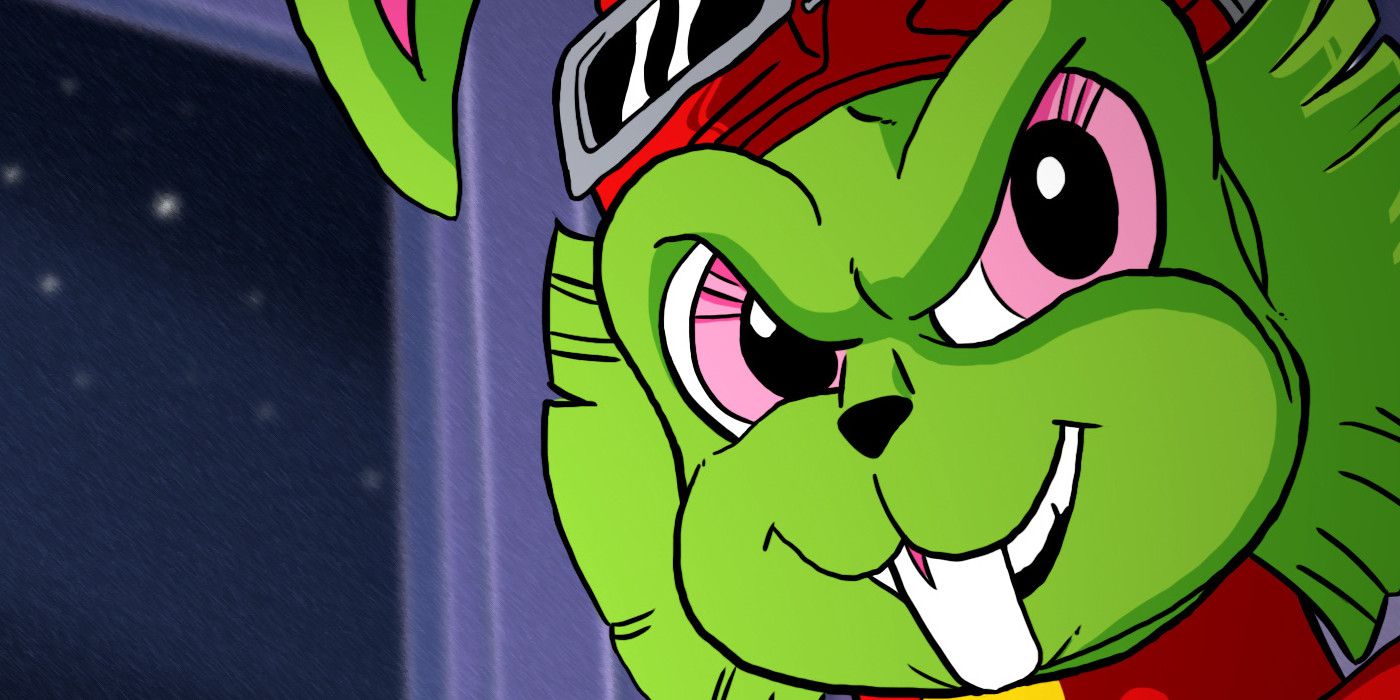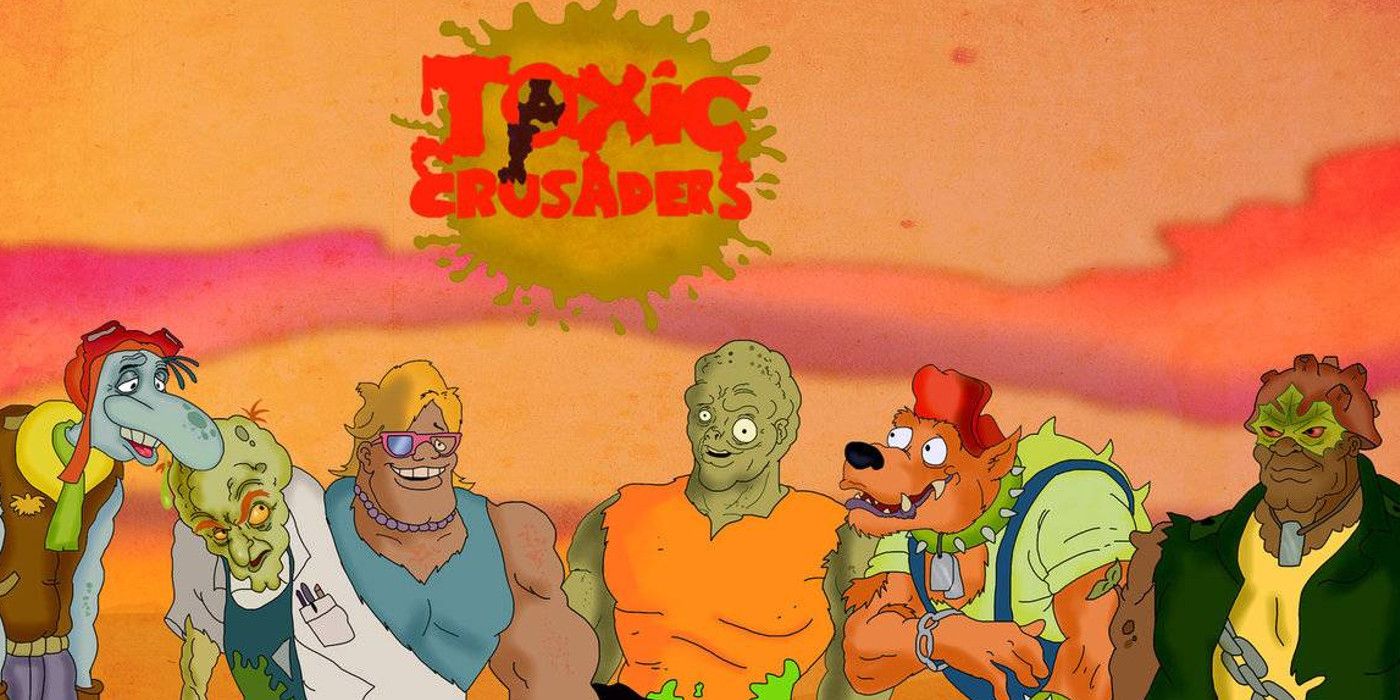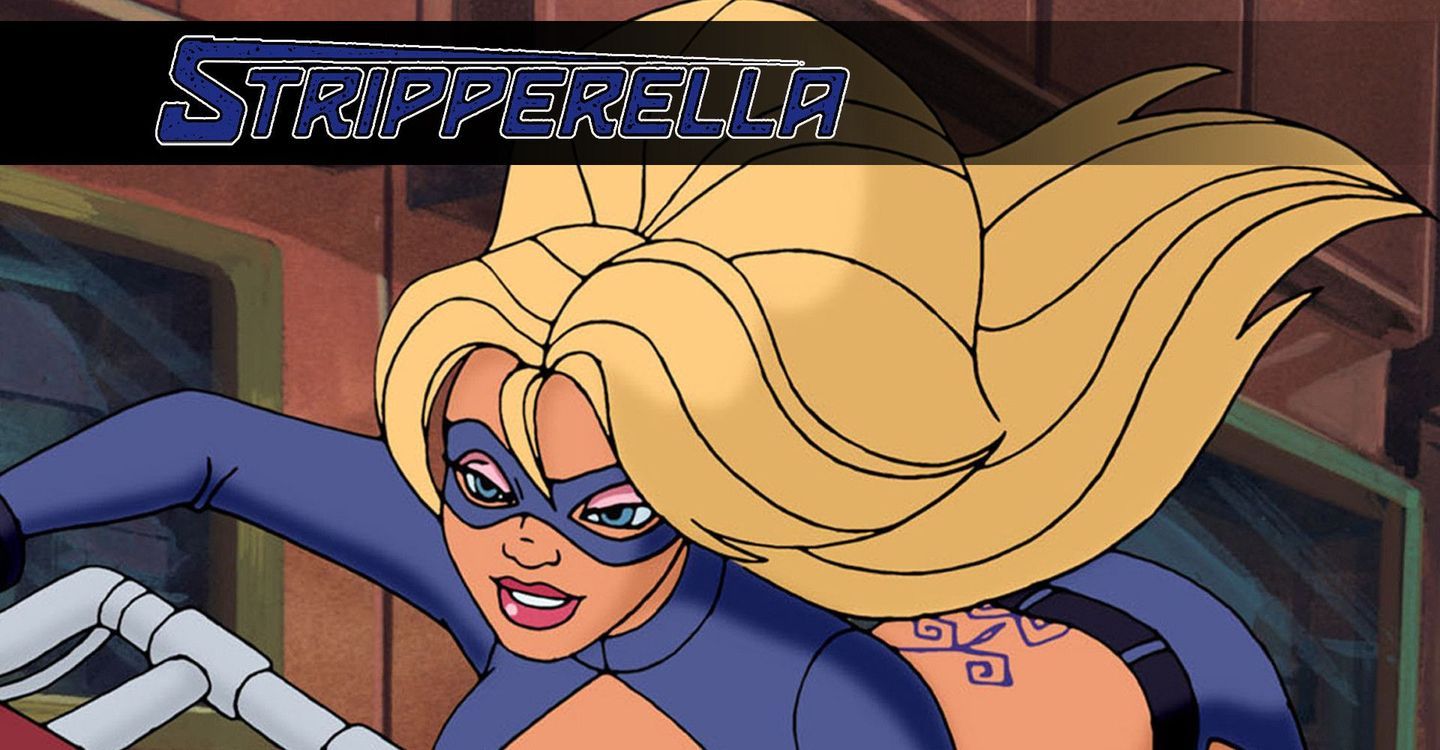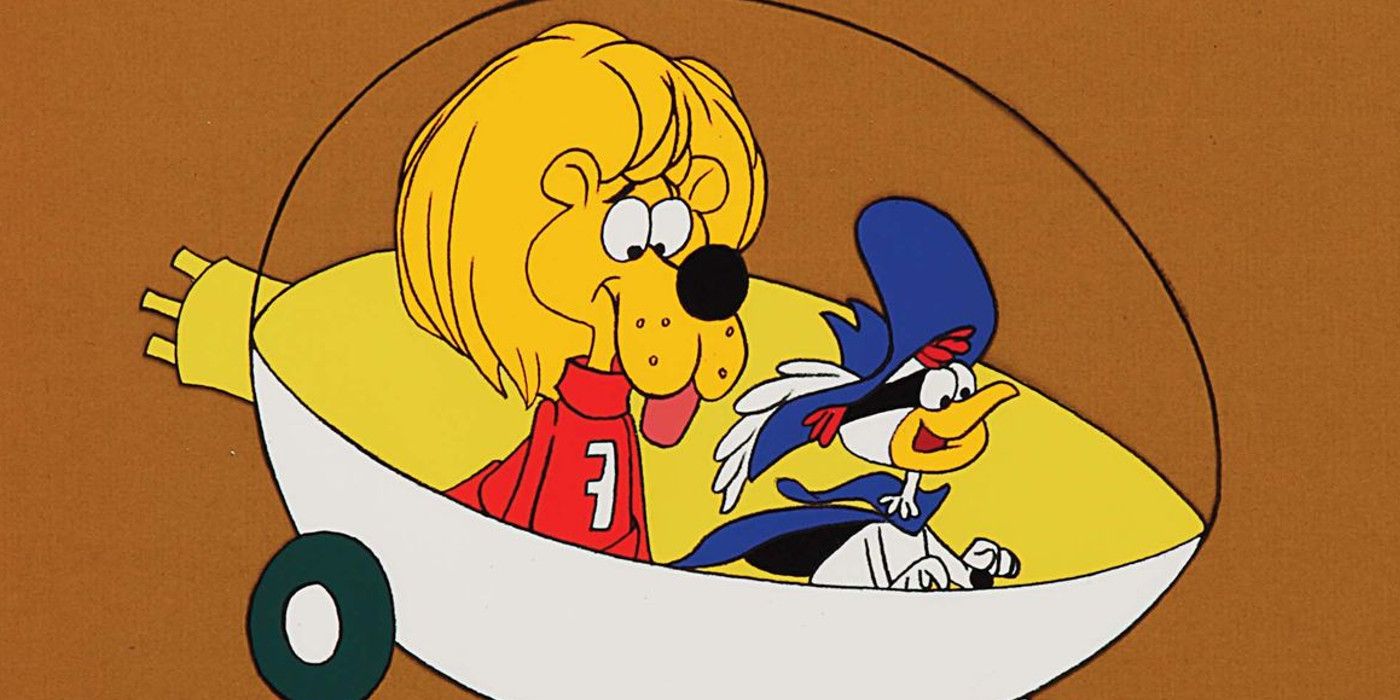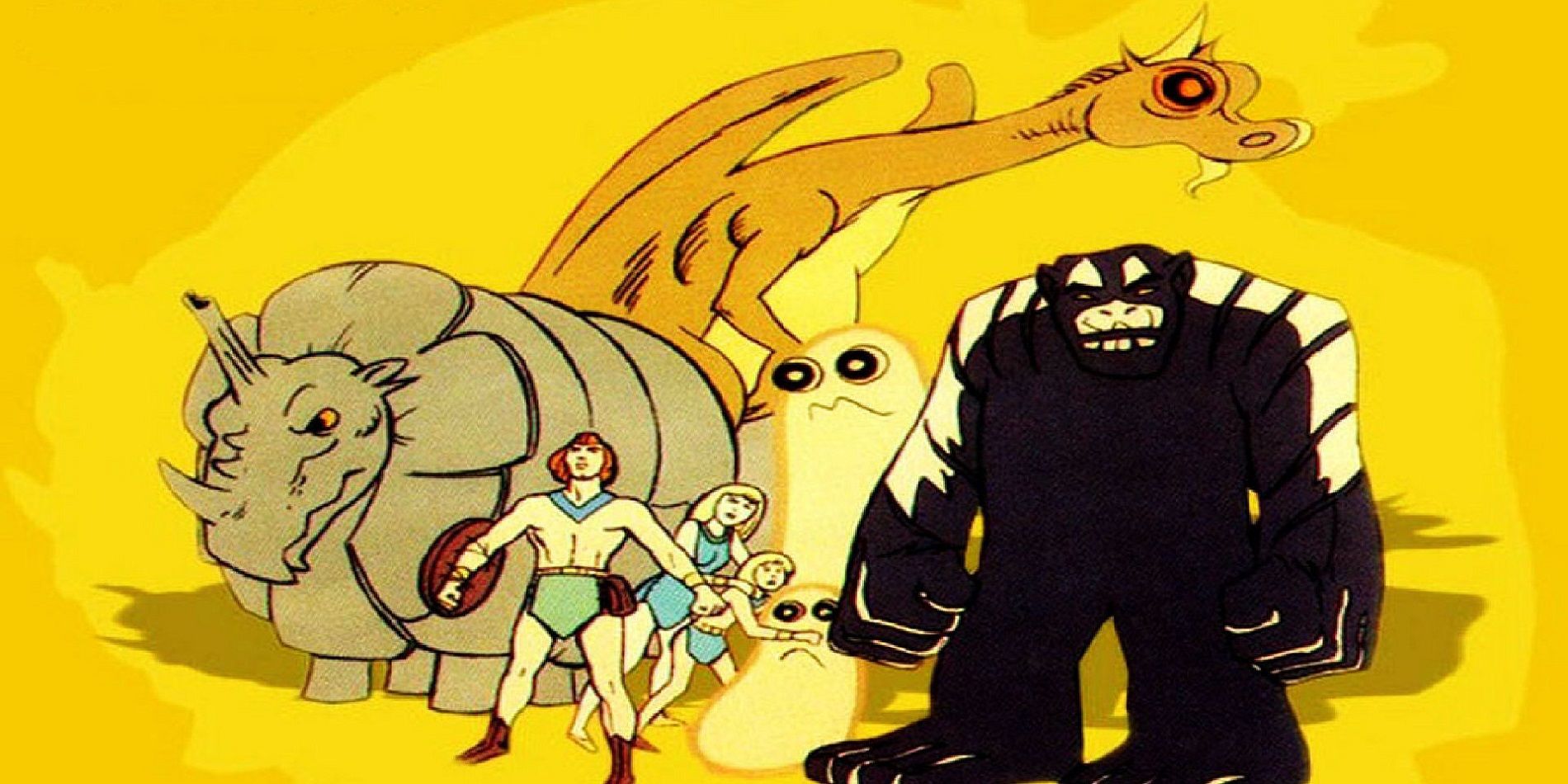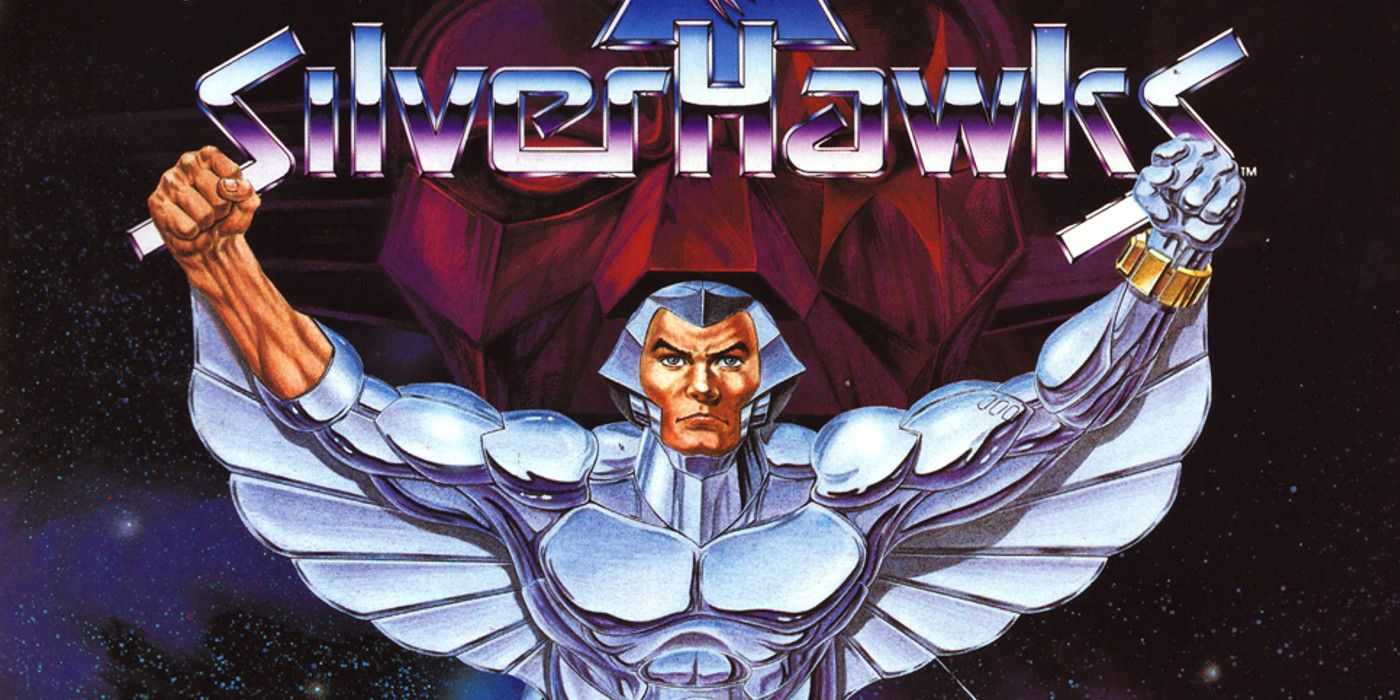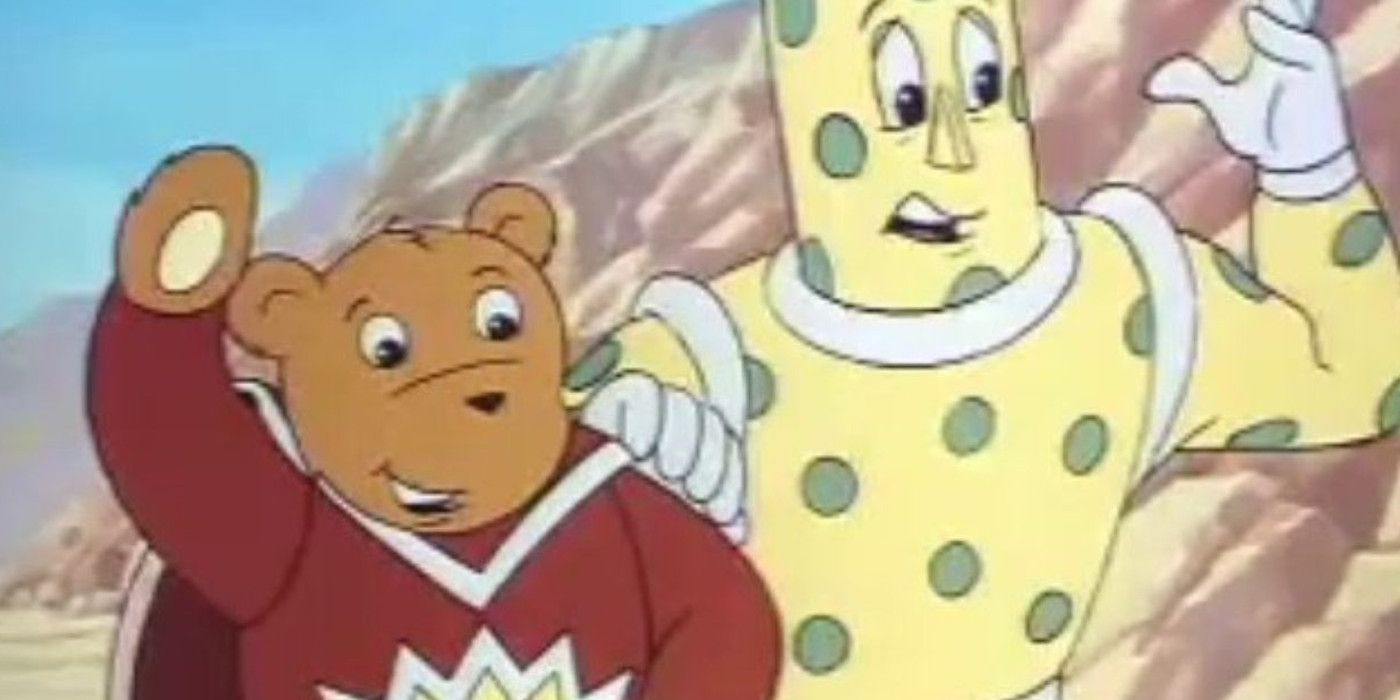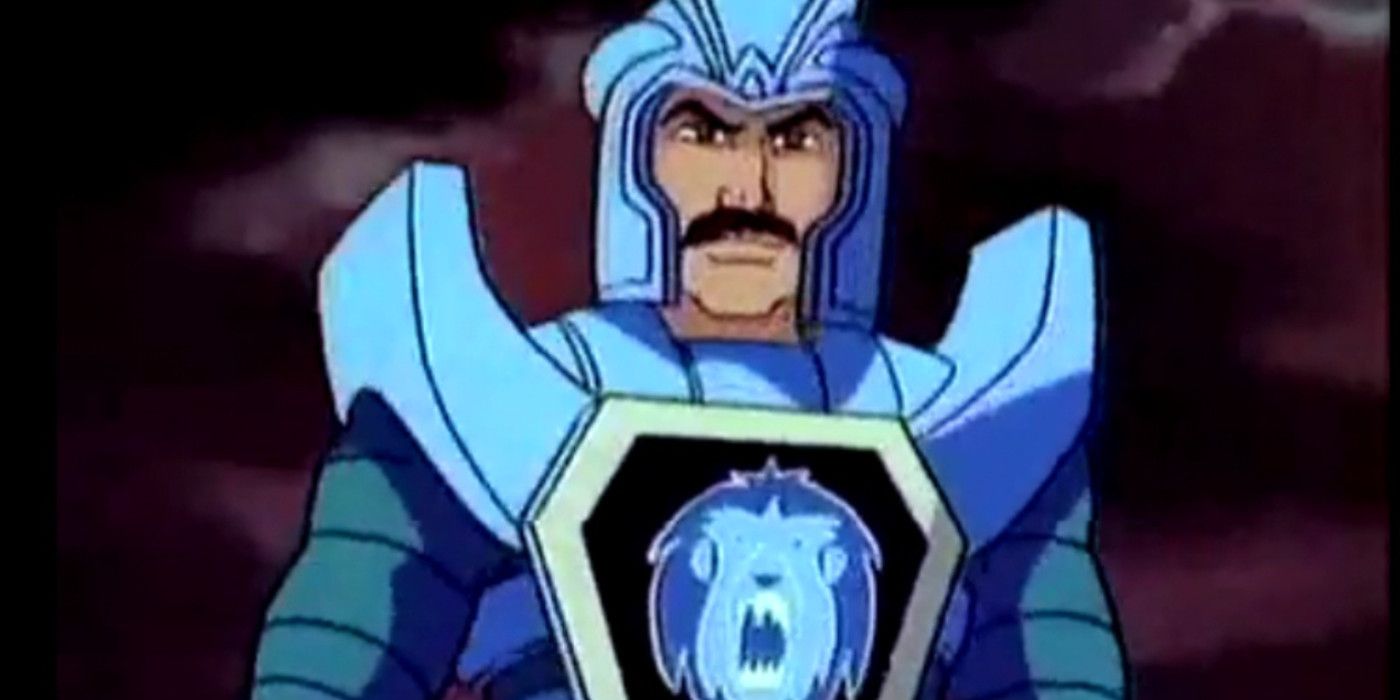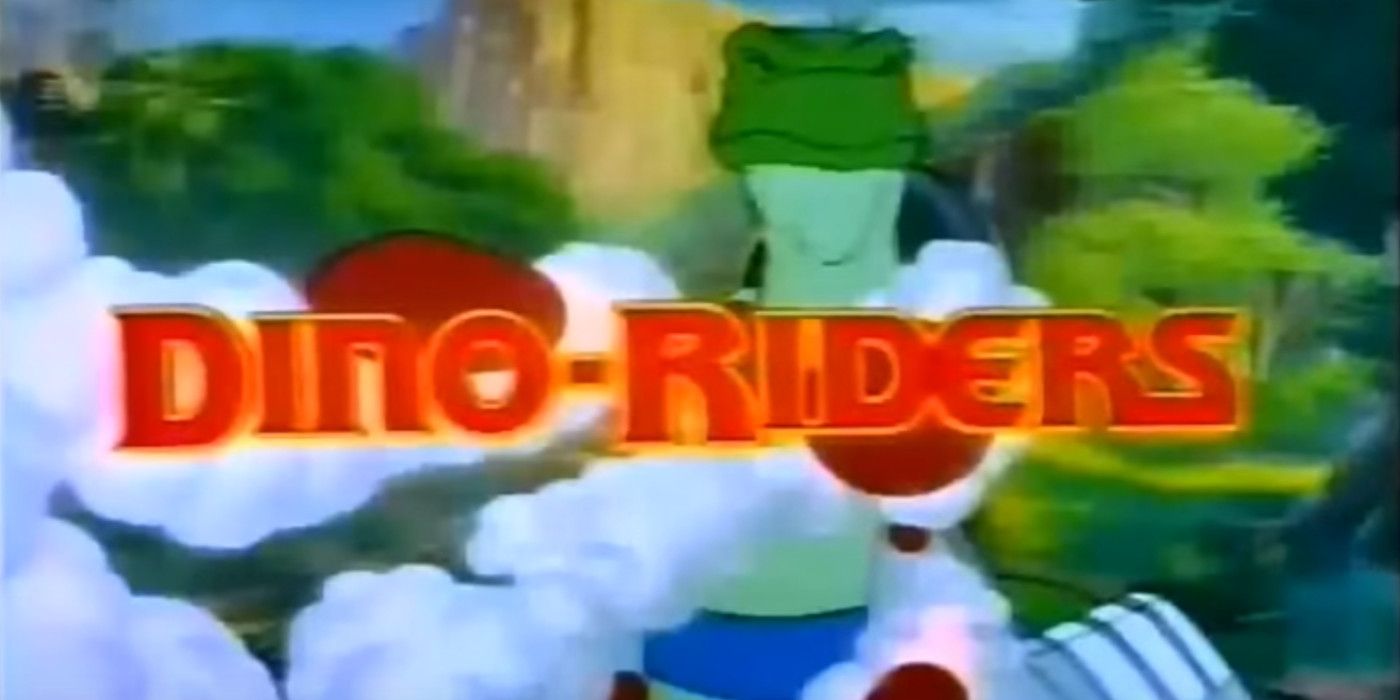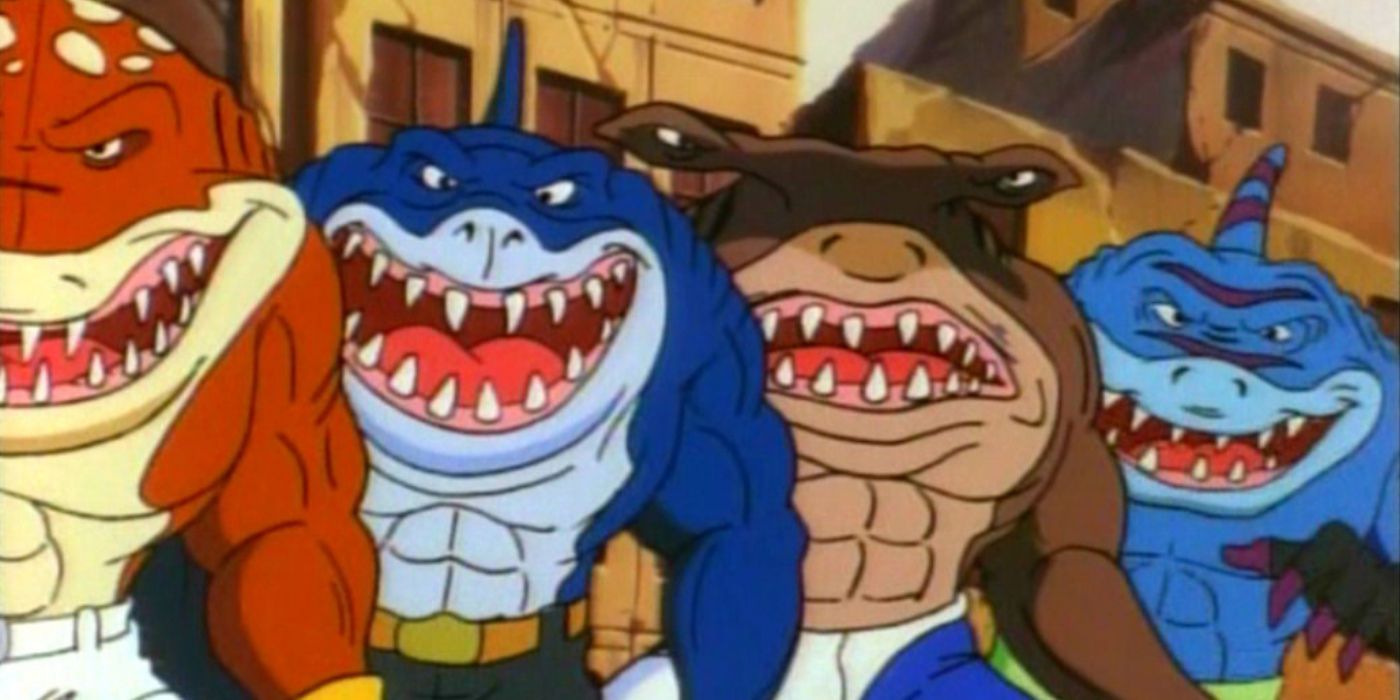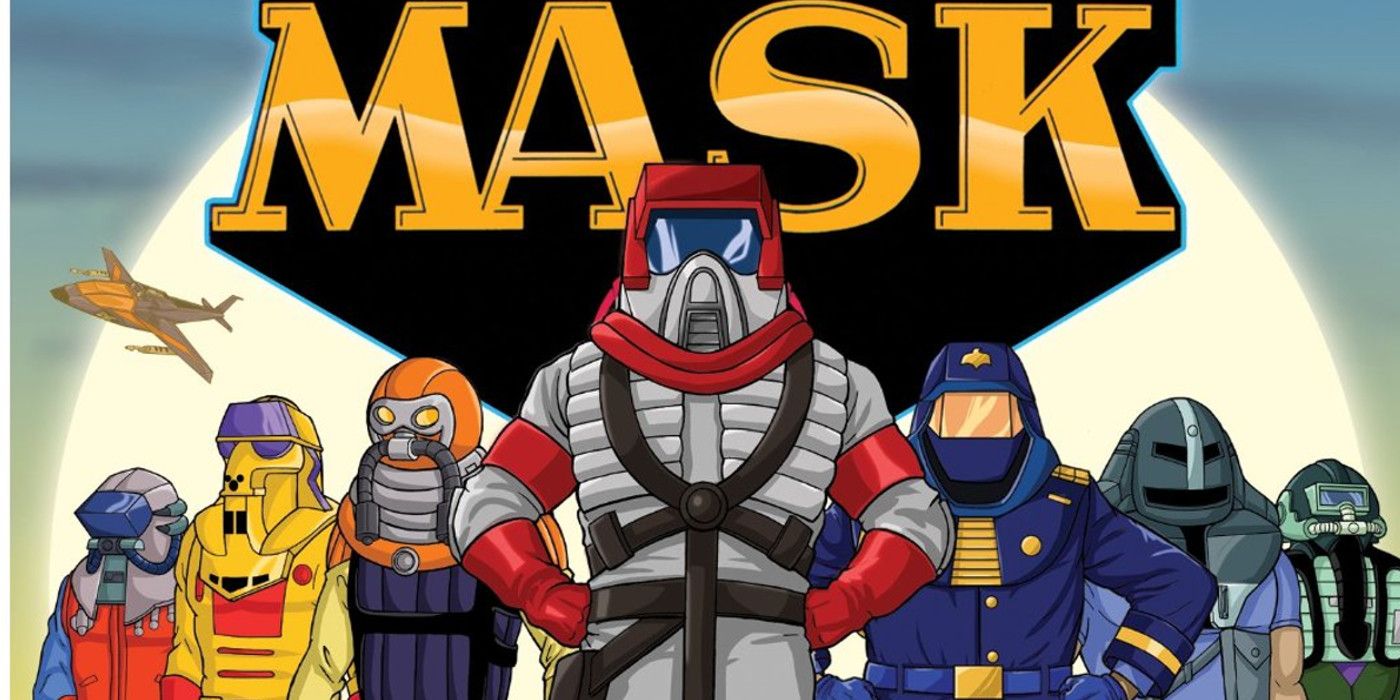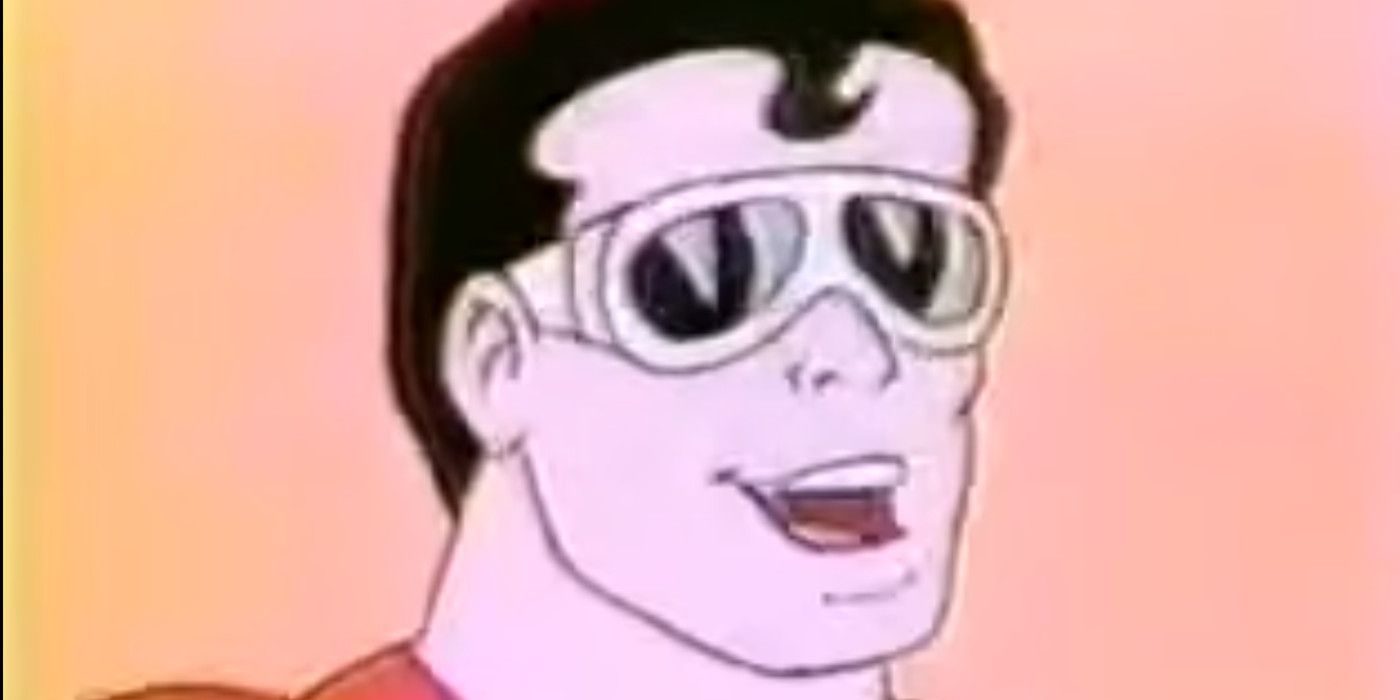Superheros take many forms. While the zeitgeist tends to think of a superhero as clad in tights, wearing a cape and classified as either a DC or Marvel property, we geeks know that countless heroes don’t qualify under any of those criteria. For that matter, a superhero doesn’t even need to debut in a comic book. Certainly numerous heroes have gotten their start in film or on television before gracing the pages of a monthly comic series.
Though oft overlooked by modern audiences, TV has a long history of producing superhero shows, many of which are eventually forgotten. Saturday morning and after school cartoons, in particular, have long played host to debuting heroes, many of whom go on to leave an important mark on the pop culture of the day. The titles included here, however, did not quite become pop culture touchstones. On the contrary, most have fallen into total obscurity, but for small cult followings. To some degree, that might also derive from the fact that the lack of tights and capes make the public overlook the simple fact that they’re all superheroes to begin with!
Prepare for a jaunt down memory lane, then, with stops in locations little visited today. For your review and consideration, check out 15 Animated Superhero TV Shows You Totally Forgot About.
15. Super President
Superheroes often have strange origin stories, ones that can springboard into even weirder premises for each issue. Teenage Mutant Ninja Turtles, anyone? The Toxic Avenger (more on him in a moment)? Such absurdity comes with the territory, though this cartoon took advantage!
Super President ran on NBC for one season in 1967. As the title implies, the show revolved around US President James Norcross, who conceals his secret identity as Super President, a tights-clad morphing superhero. Hey, nobody said he did a good job keeping his secret identity a secret!
Norcross operates from a secret base accessed through a passage in the Oval Office, aided by his Henry Kissinger-doppelganger aide Jerry. In each episode, Super President would do battle with his own gallery of rogues, including the sinister Steel Man, Con-Dar and Monasto. With some of the worst animation imaginable, and amid protests from media watchdog groups, Super President never quite found its audience. Today, however, it enjoys yearly screenings at Comic-Con as one of the worst cartoons in history!
14. Danger Mouse
The British put their own spin on the superhero motif with Danger Mouse, a series which also betrayed their penchant for secret agents. The series began in 1981 and featured the titular lead created in the vein of Danger Man. Each episode would find Danger Mouse jet setting around the globe to do battle with his gallery of supervillians. A good chunk of the capers turned out to be the plots of Danger’s nemesis, Baron Greenback, an anthropomorphic toad. Greenback’s plots included shrinking and stealing skyscrapers from around the world, cloning himself, and teaming up with Count Duckula (himself a forgotten animated series star) to mind control all the dogs in the world.
Danger Mouse proved a runaway hit in the UK, winning more that 21 million viewers per episode at it’s peak! In 1984, the series became one of the first programs aired by the fledgling cable network, Nickelodeon. In all, the show would run for a whopping ten seasons, before finally shutting down in 1992. A reboot began running on Netflix in 2015.
13. Defenders of the Earth
If the Superfriends became a cultural hallmark of the '70s and '80s, this show would, no doubt, be considered one of the strangest knockoffs. Much as The League of Extraordinary Gentlemen re-imagined classic literary characters as a Justice League-type team, Defenders of the Earth resurrected comic strip characters Flash Gordon, The Phantom, Mandrake the Magician and his bodyguard Lothar in a similar vein.
As the show began, Ming the Merciless, Flash Gordon’s nemesis, has at last decided to conquer the Earth. Flash, The Phantom, Lothar and Mandrake team up to lead the charge against Ming’s invasion, enlisting their own kids to join the defense force. Produced by Marvel Productions, the same production company responsible for Transformers and GI Joe, Defenders of the Earth lasted for a single season, running 65 episodes. The theme song also had an unlikely composer: Stan Lee!
Despite tie-in comic books and a toy line, the show never found more than a small cult audience. Given that the lead characters had waned in popularity from their peak decades before, kids of the time gravitated instead to shows like Thundercats and He-Man.
12. Bucky O’Hare and the Toad Wars
With the Teenage Mutant Ninja Turtles going strong as an animated series, not to mention racking up massive merchandise sales, it should come as no surprise that Marvel Productions wanted a piece of the action. Their answer to the Ninja Turtles phenomenon: Bucky O’Hare and the Toad Wars, an animated series based on another cult comic book. The plot followed the Sentient Protoplasm Against Colonial Encroachment, known as S.P.A.C.E., as it tried to defend the planet Warren from an invasion by the Toad Empire. Captain Bucky O’Hare, of the spaceship Righteous Indignation, and his crew led the resistance against the Toad invasion, flying around the galaxy to foil the Empire’s tyranny.
Despite the inventive premise, and despite the contributions of famed comic book writer Neal Adams, Bucky O’Hare and the Toad Wars ran only 13 episodes. It nevertheless spawned a cult following, which has produced a good deal of fan fiction, including a web series which continues the story of the '90s show.
11. Toxic Crusaders
Like Bucky O’Hare and the Toad Wars, Toxic Crusaders tried to capitalize on the Ninja Turtles craze of the 1990s. The cartoon was based on the series of low-budget Toxic Avenger cult films, toning down much of their adult content in favor of more kid-friendly adventures. The heroic team consisted of Toxie, a janitor mutated by toxic waste; No-Zone, a pilot exposed to radioactive pepper; and Headbanger, who was actually two people fused into one body. Toxie’s girlfriend Yvonne would often join in the adventures, playing the accordion and singing songs to cheer on the team.
Despite a built-in following thanks to the success of the Toxic Avenger movies, Toxic Crusaders never found an audience. Still, given the success of the Teenage Mutant Ninja Turtles live-action films, New Line Cinema at one point announced a Toxic Crusaders movie. Alas, it never came to fruition, and resulted in a lawsuit between Troma, the company which produced the Toxic Avenger movies, and New Line Cinema, which produced the Ninja Turtles films. Weird and littered with subtle adult humor, the Toxic Avenger cult continues to cherish Toxic Crusaders, even if nobody else does!
10. Stripperella
Stan Lee returned as superhero creator in 2003, conceptualizing Stripperella for the Spike network. Lee designed the project with only one actress in mind: Pamela Anderson, already famous for her ample cleavage, as well as her performance in the superhero parody Barb Wire. In the series, Anderson played Erotica Jones, a nightclub stripper. In her off hours, Jones donned a costume and became the superheroine Stripperella, who often teamed up with her stripper-superhero brother, Chipperella.
Despite a good deal of hype, Stripperella never quite found an audience. The show geared itself toward adults, and featured lots of nudity, crude humor and numerous sexual entendres. Spike retooled the show halfway through the first season to include a different animation style in hopes of attracting more viewers. However, a lawsuit by a former Florida stripper claiming that she had created the character cast a pall on the show, and eventually would lead to cancellation. A subsequent, planned comic book series also got scrapped as well, leaving Stripperella one of the most obscure, if bizarre, superheros to grace TV animation.
9. Super Chicken
Exactly what happened in the 1960s that made superhero TV so dang weird?! From the Batman live-action campfest to Super President, superhero shows ran the gamut from goofy to just plain bizarre.
Case in point, Super Chicken, a weird cartoon from the minds of Jay Ward and Bill Scott, who found earlier success with Rocky and Bullwinkle. Super Chicken followed the adventures of Henry Cabot Henhouse III, who fought crime as the titular superhero. Just before Henhouse would spring into action, he would ingest a substance called Super Sauce (invariably served in a martini glass…think about that one) which would transform him into his costumed identity. Super Chicken and his sidekick Fred would fly around in an egg-shaped hovercraft fighting off super-foes like the Oyster or the Elephant Spreader.
Super Chicken ran one season as part of the George of the Jungle animated series, and sported the same stiff look to its animation. Even for the '60s, Super Chicken proved too weird to catch on with the public at large, though predictably, it maintains a cult following today.
8. Herculoids
Not wanting to get outdone by Super Chicken or Super President, '60s animation powerhouse Hanna-Barbera -- the production company responsible for The Flintstones and Scooby-Doo -- came up with their own superhero series. The Herculoids took place on a far-off planet called Amzot, and followed three cave-humans and their dinosaur-like friends as they fought off invasion by more technologically advanced species. Said creatures included Zok the dragon, Igoo, the ape made of rock, Tundro the triceratops and Gloop & Gleep, two balls of goo that could shape shift.
The Herculoids reused music and animation from other Hanna-Barbera productions like Johnny Quest. The show only lasted one season, though it did get a revival as part of Space Stars, a 1980s compilation that featured Johnny Quest and Space Ghost.
Much as Space Ghost became something of a camp classic, so do audiences remember The Herculoids…at least the audiences that remember the show at all, anyway.
7. SilverHawks
Rankin-Bass had a hit TV show in the mid-1980s with Thundercats. Hoping to repeat their success, the studio recruited the same cast and recycled a similar premise into SilverHawks, an animated adventure show about cyborg cops in the distant reaches of space.
SilverHawks followed the adventures of Comander Stargazer and his crew aboard their ship, the Miraj. The group fly about the galaxy fighting intergalactic mobsters, lead by the evil Mon*Star, a crime lord with the ability to turn into an armor-clad super being.
SilverHawks never found the same success as Thundercats, likely due to the redundant plotting and weird premise. A toy line found some moderate success, though today, the public at large has forgotten SilverHawks, save for a few cult followers of a certain age. When Thundercats got the reboot treatment in 2011, fans hoped for a SilverHawks spin-off or crossover, owing to an Easter egg image of Mon*Star in one scene. Unfortunately, the Thundercats reboot lasted only one season before landing back on the shelf next to SilverHawks.
6. SuperTed
While almost totally unknown to American audiences, SuperTed proved a very successful cartoon series in Europe throughout the 1980s. The series derived from short stories written by Welsh author Mike Young, which had won attention from Warner Bros. Young turned down their offer, opting to start his own animation company to produce the show!
SuperTed followed the adventures of a defective teddy bear. Relegated to a store room, Ted gets discovered by an alien named Spotty. Spotty brings the toy bear to life, and the two journey off to visit Mother Nature. Nature gives Teddy superpowers, which he can invoke any time he says a magic word. Ted and Spotty subsequently team up to stop trouble wherever it arises.
Calling the premise of SuperTed unusual is an understatement. Nevertheless, the show proved a hit in Europe, and inspired an American spin-off, The Further Adventures of SuperTed in 1989. Unfortunately the show—which lampooned American culture—didn’t catch on with US audiences. It met with cancellation after the first season, and vanished into obscurity.
5. Visionaries
Another toy line tie-in series, Visionaries had a brief run in 1987. Set on the distant planet of Prysmos, people abandon their technologies in favor of magic powers. Two factions develop: the Spectral Knights, and the Darkling Lords. The two battle for control of the planet, using the powers of good and evil magic.
Visionaries actually had an interesting premise, and a visually arresting toy line to boot. Unfortunately, given stiff competition from He-Man, Transformers, and Thundercats, the toy line never quite caught on. With sales foundering, and given the expensive production costs of manufacturing a hologram-based toy, Hasbro opted to scrap the entire franchise. The show ended after only 13 episodes, and a second wave of toys never hit shelves. Ironically, the show actually had a strong following which remembers it with affection today. For that reason, Hasbro opted to develop a Visionaries movie with Paramount in 2015; it remains in development today.
4. Dino-Riders
Another '80s toy line, another brief, if memorable cartoon series! Dino-Riders debuted in 1988 and attempted to capitalize on the sudden societal obsession with dinosaurs. Several other toy lines—notably the Masters of the Universe spin-off Legends of Greyskull—had tried a similar gimmick, though out of all of them, Dino-Riders probably had the most success.
The story revolved around two warring factions, the benevolent Valorians and the sinister Rulons, who travel 65 million years into the past. The Valorians befriend the dinosaur species they encounter, while the Rulons enslave and brainwash the creatures. Battles ensue, pitting dino against dino, with both sides augmented by futuristic technology.
Produced by Marvel, Dino-Riders ran only 14 episodes before getting the axe. Despite the presence of veteran voice performers like Peter Cullen (Optimus Prime) and Cam Clarke (Leonardo the Ninja Turtle), the show never quite caught on with viewers. The toy line went extinct in 1990 and remains largely forgotten, though a film adaptation is rumored to be in the works.
3. Street Sharks
Another Ninja Turtle wannabe, Street Sharks debuted as the Ninja Turtle phenomenon had begun to wane. The show revolved around a similar premise too: two scientists create a machine capable of crossbreeding animal DNA with human genes. One scientist is mutated and vanishes, while his four sons obtain shark DNA, becoming the titular team. In their adventures, they end up augmenting several of their friends into other superpowered mutants. The remaining evil scientist, Dr. Paradigm, augments his own DNA with that of a piranha, becoming Dr. Prianoid, and creates a variety of gene spliced creatures to battle the Street Sharks.
Street Sharks actually had a decent run of 40 episodes over three years. The show found a sizable cult following, and the corresponding toy line sold well over the course of the show’s run (thanks in no small part to some genius advertising from a young Vin Deisel). A spin-off, Extreme Dinosaurs ran one season in 1997. While not as original or beloved as some of the other titles mentioned here, Street Sharks won enough of a following to make it a cult hit in its day. It also became one of the first kid shows to have its own website on the internet.
2. M.A.S.K.
One of the endearing cult franchises of the '80s, M.A.S.K. debuted in 1985 to help promote the identically titled toy line (noticing a pattern here?). The show attempted to tap the audiences of the then-popular GI Joe and Transformers series with a story revolved around the titular organization, an acronym for Mobile Armored Strike Command. The team used a variety of transforming and augmented vehicles to do battle with the crime syndicate V.E.N.O.M., a similarly-powered group with special vehicles and powered masks. Much like GI Joe, the plots of the series revolved around M.A.S.K. foiling V.E.N.O.M.’s plots to kidnap endangered pandas or steal legendary objects.
M.A.S.K. had only a short run on TV, running two seasons of 75 episodes in syndication. Still, it became a cult phenomenon which endures even today. In 2015, Hasbro, parent company of toymaker Kenner, announced that it was reviving the toy line, and that M.A.S.K. characters would appear in a third GI Joe film, suggesting a comeback for the beloved series.
1. Plastic Man
Plastic Man marks the lone superhero to come from a major comic label, in this case DC Comics, to get a major, if forgotten, series. The Plastic Man Comedy/Adventure Show ran from 1979 to 1981, at which point it moved from ABC into syndication. It ran until 1984 as a half hour show.
The show followed the adventures of the titular character, along with his girlfriend Penny and best friend Hula-Hula as they journeyed around the world trying to intervene when threats to peace arose. Much like Deadpool in the modern era, Plastic Man maintained a goofy sense of humor, and occasionally broke the fourth wall to introduce new segments of the show. One recurring segment followed Plastic’s infant son’s adventures, as he used powers similar to those of his dad.
Plastic Man maintains a strong following today, owing to the character’s enduring popularity in DC Comics, and to the mix of '70s/'80s adventure and camp in the cartoon. The show came to DVD in 2009, and with the DCEU hitting movie screens, look for Plastic Man to return to pop culture soon.
---
Did we miss your favorite forgotten animated superhero show? Tell us in the comments!

